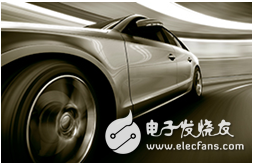One of the worst things I encountered after a long trip was to find that the car didn't start properly. The reason is simple: the car battery is dead. Who is "stealing" the battery's power? Some people may be surprised to learn that it is actually the car itself that runs out of battery power. Even when the car is turned off, many systems still operate in standby mode, so the battery's power is still being used. For example: anti-theft locks and remote keyless entry systems constantly monitor external signals. Infotainment and dashboards must be in a standby state to achieve a quick start of the system after the car is ignited. With the rapid development of cars in recent decades, people's expectations for car intelligence are also rising. More intelligent cars require more electronic control units (ECUs). However, automotive battery technology has not achieved breakthrough improvements. In order to extend the life of the battery, car manufacturers are beginning to set increasingly stringent requirements for the quiescent current of each standby ECU. At present, the trend that the quiescent current of the entire ECU is less than 100μA is sweeping the industry, surpassing the traditional milliamp (mA) level quiescent current specification. For an ECU in standby mode, there are usually at least three types of components that consume power, namely: a microcontroller (MCU) for system control, a controller area network (CAN) / LIN transceiver for communication, and They are powered by power components. For small ECUs, most customers prefer low-dropout regulators (LDOs) as system power supplies because they are easy to use and do not require EMC considerations. In general, a 32-bit MCU will consume approximately 30μA in standby mode, while a CAN transceiver will consume approximately 20μA. If a certain quiescent current margin left to the system is calculated, the space left for the LDO is very limited: only 20 to 30 μA. Traditional batteries (and a direct-attached LDO with a bipolar process design) typically consume more than 100μA of quiescent current, which does not meet the latest requirements from OEMs. To help extend battery life, TI has developed a family of complete automotive batteries with a very low quiescent current, directly connected to the LDO device. Its output current capability ranges from 50 mA to 450 mA to meet the needs of “simple†and “complex†ECUs. The TPS7A16xx-Q1 is a 100 mA high voltage LDO with ultra-low quiescent current of only 5μA. Its input voltage can withstand up to 60 V safely, making it suitable for use in 24 V systems such as trucks. For current requirements of 150 mA, the TPS7A66xx-Q1 and TPS7A69xx-Q1 are available in SOIC and MSOP packages with quiescent current of only 12μA. In applications where high currents are required, the TPS7B67xx-Q1 is capable of outputting 450 mA and its quiescent current is only 15μA, which is the lowest value of its class on the market today. TI has a broad portfolio of automotive LDO products to meet your current needs: here (to the hyperlinks to the LDO selection page) find the ideal product for your needs. With these automotive LDOs with ultra-low quiescent current, you will be able to significantly improve the life of your car's batteries. What other methods do you achieve critical current savings in your system?
Medical protective clothing refers to the protective clothing used by medical personnel (doctors, nurses, public health personnel, cleaners, etc.) and people entering a specific health areas (such as patients, hospital visitors, persons entering the infected area, etc.).
Product advantage:
Good fire resistance, Scratch resistant,durable and tear resistant
protective clothing for covid, protective clothing for mold removal, protective clothing medical, protective clothing amazon, protective clothing and equipment Jiangmen soundrace electronics and technology co.,ltd. , https://www.soundracegroup.com

Prevent virus invasion,Good filtration efficiency
Light and soft, Comfortable and durable
EN14126; ISO EN13485;
September 02, 2022